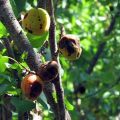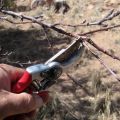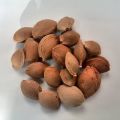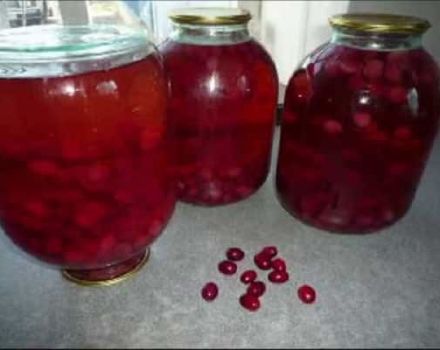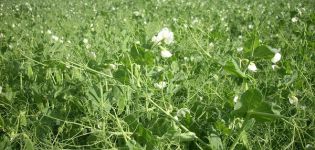Description and characteristics of the Hargrand apricot variety, cultivation and care
Apricot fruits have many useful properties that a person needs to strengthen immunity and replenish lost elements during the winter. Many people try to grow early varieties in order to enjoy the taste of apricot faster. But the cultivation and consumption of late and mid-season varieties, such as Hargrand, sometimes exceed the amount of valuable micro- and macroelements contained in apricot.
Description of the variety
The apricot cultivar was bred at random by Canadian breeder J. Lyon in Harrow, Ontario, Canada in 1961 by pollination with Gold Rich. The Hargrand apricot variety was registered and described in 1981, after which it began to gain its popularity.
The tree is tall, up to 5 m, the crown is wide, spreading, the trunk is bumpy, brown-gray, moderate growth force. Buds are large, formed not only on one-year and two-year branches, light brown in color. Leaves are ovoid with a pointed tip, thin, dark green above, pale green below, are on long petioles of brown-green color.
The flowers are medium-sized, white-pink on short petioles, bloom from mid to late May.
The fruits are large, oval in shape from 60 g to 150 g, the skin is thin, but dense, orange in color with pink dots. The shape of the fruit is round, the flesh is tender, juicy with a honey aftertaste, orange in color with a light sweet honey aroma. The stone is rounded-flattened with a rib, well separated from the fruit, the core is bitter.
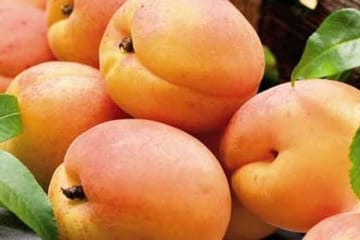
Variety characteristics
Apricot Hargrand is partially self-fertile, early-fertile, for higher yields, you can plant the Gold Rich variety.
- Frost resistance of the root system down to -30 ° C.
- Resistance of fruit buds to short-term frosts.
- Fruits ripen later, late July, early-mid August.
- High-yielding apricot, fruit rationing is needed.
- The fruits are stored for a long time, up to 2 weeks, especially if the temperature regime is +5 degrees.
- Do not crack.
- They tolerate transportation well.
- The presentation is good.
- Resistance to diseases and pests is high, especially to bacterial cancer.
- Has a long fruiting period, more than 40 years.

Advantages and disadvantages
Apricot has more advantages than many other varieties for central Russia: it self-pollinates, the yield is high, almost does not get sick and is not damaged by pests.
High commercial quality, Hargrand is an apricot of universal use, fresh and processed.
The disadvantage of the variety: you need to normalize the crop, otherwise the branches break, and the extra ovary does not disappear on its own. He needs constant care.
Growing and care
Apricot Hargrand grows well in loamy, sandy loam soils and black soil. The place should be sunny, without drafts, the side is south, southeast, southwest. The soil for planting should be well-groomed, weed-free, loose, with a neutral acidity level.
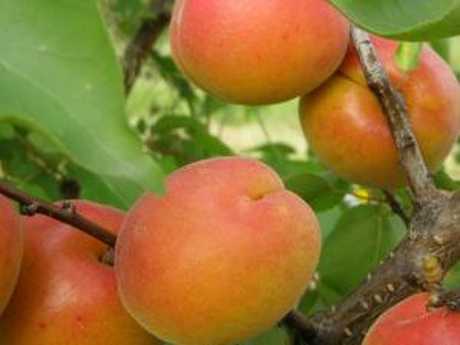
Saplings should be planted in the spring, in April, provided that frost and warmed up soil have passed up to +12. The material for planting should be taken from proven nurseries, special attention should be paid to the root system, which should be free from pests, holes, flexible, branched, without rot and other damage.
Before planting, it is soaked in water for 2-3 hours, after which it is treated with a disinfectant solution and a growth stimulator.
He is demanding in care, you need to apply complex fertilizers 3-4 times per season. Watering in the early years of the seedling should be abundant: 1-2 buckets every 7-10 days. The crown of the tree is spreading, it needs formative and regulating pruning. For the winter, the root circle should be covered with dry branches, hay, spruce branches, sawdust or peat.

Treatment and prevention of diseases
Hargrand apricot is resistant to disease, but for prevention, it should be sprayed with fungicides in the spring when leaves appear and in the fall after harvest. Sanitary pruning and cleaning around the tree should be carried out, the trunk should be painted with a mixture of lime and copper sulfate. Loosen soil and remove pests.
The apricot variety Hargrand is suitable for growing in central Russia, subject to shelter and high hilling of the trunk, it can be grown in southern Siberia. The plant is widespread in the CIS countries, it is used for growing on an industrial scale.

